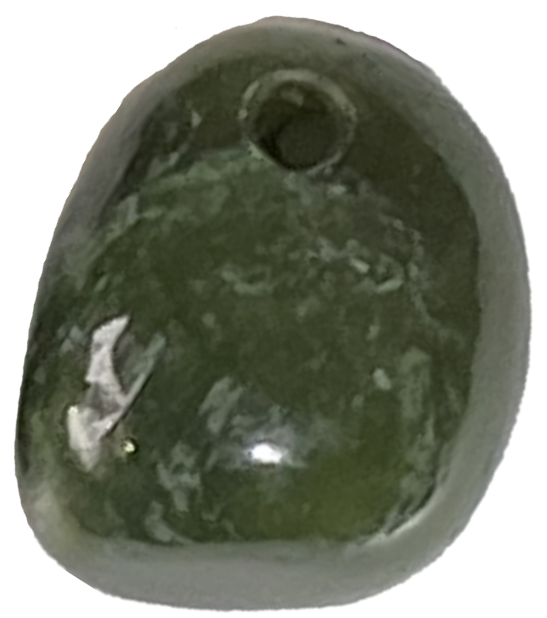
The name Jade derives from the Spanish term piedra de ijada, meaning “stone of the flank,” due to its historical use in treating kidney ailments. Jade comes in two mineral forms—Nephrite and Jadeite—each distinct in composition and value. Some cultures refer to it as the Stone of Luck and Abundance, appreciating its deep association with prosperity and well-being.
Composition, Physical Characteristics, and Varieties
Jade occurs as Nephrite (a calcium magnesium silicate) or Jadeite (a sodium aluminium silicate), both sharing a smooth texture and remarkable toughness. It ranks 6 to 7 on the Mohs hardness scale, making it exceptionally durable. Jade is found in green, white, lavender, yellow, and black, with emerald-green Jadeite being the rarest and most valuable.
Varieties of Jade include:
- Classic Green Jade – the most widely recognised shade, symbolising growth and renewal.
- Lavender Jade – associated with spiritual insight and emotional healing.
- White Jade – prized for its calming and purifying properties.
- Black Jade – linked to protection and grounding energy.
Geographical Locations Where It Is Found
Major deposits of Jade exist in China, Myanmar (Burma), New Zealand, Canada, and Guatemala, with Myanmar producing the finest Jadeite specimens. Nephrite Jade is abundant in China and British Columbia, while Maori traditions in New Zealand cherish their native greenstone, known as Pounamu.
Archaeological and Significant Finds with Historical and Current Usage
Jade has been revered for millennia, appearing in ancient Chinese, Mesoamerican, and Maori artefacts. The Chinese considered Jade the “imperial gem”, crafting exquisite carvings, jewellery, and ceremonial items. The Maya and Aztecs adorned their rulers with Jade jewellery and masks, associating it with divine protection. Today, it remains highly sought after for ornaments, sculptures, and metaphysical practices.
Interesting Facts
- Jade is so tough that ancient artisans used abrasives instead of chisels to shape it.
- Chinese emperors valued Jade as a symbol of immortality and wisdom.
- Nephrite Jade was once used in weaponry and tools, thanks to its durability.
Folklore, Superstition, Legends, and Tales
In Chinese folklore, Jade represents purity and virtue, believed to bring harmony to relationships and protect against misfortune. Mesoamerican legends link Jade to divine favour, worn by rulers as a sign of spiritual strength and prosperity. Maori traditions hold that Pounamu carries ancestral energy, passed down through generations.
Mystical Healing Properties, Astrology, and Zodiac Associations
Jade is revered for its calming, protective, and prosperity-enhancing properties, supporting emotional balance and attracting abundance. Astrologically, it resonates with Libra, Pisces, and Taurus, complementing their harmonising and nurturing nature:
- Libra – fosters inner balance and serenity.
- Pisces – deepens spiritual connection and emotional healing.
- Taurus – attracts prosperity and strengthens stability.
Chakra System Connections
Jade primarily connects with the Heart Chakra, encouraging love, compassion, and emotional harmony. It also supports the Solar Plexus Chakra, promoting confidence and manifestation.
Use as a Birthstone and for a Wedding Anniversary
Though not a traditional birthstone, Jade serves as an alternative crystal for Libra and Taurus, aligning with their grounding energies. It is also gifted for a 12th wedding anniversary, symbolising harmony and lifelong prosperity.
Crystals That Work Well with Jade and Those to Avoid
- Best Pairings:
- Rose Quartz – enhances love and emotional healing.
- Citrine – amplifies abundance and success.
- Black Tourmaline – strengthens protection and grounding.
- Crystals to Avoid:
- Obsidian – its intense grounding energy may contrast with Jade’s gentle balance.
- Carnelian – its fiery energy might overshadow Jade’s soothing nature.

Jade
Jade promotes harmony, luck, and emotional balance. A sacred green stone of serenity and wisdom—ideal for protection, prosperity, and heartfelt intentions.
